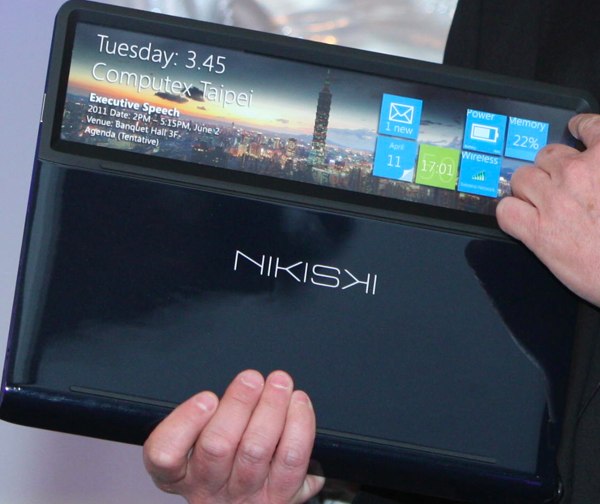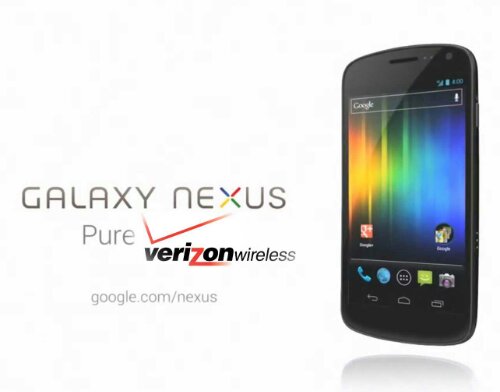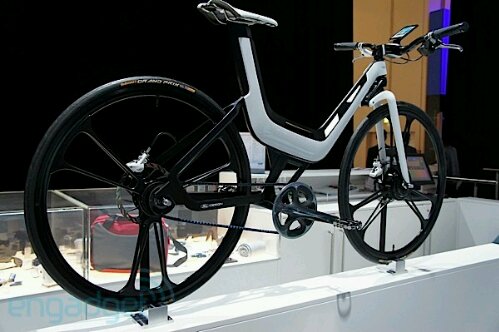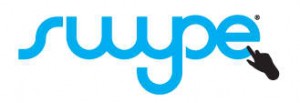
Intel demos NFC on an ultrabook: tap your credit card on your laptop touchpad to pay. #AWESOME #CES #eet_CES

Intel demos NFC on an ultrabook: tap your credit card on your laptop touchpad to pay. #AWESOME #CES #eet_CES

Nexus devices have been billed as “Pure Google” devices ever since the HTC built Nexus One was released January of 2010. The Nexus S [December 16, 2010] and Nexus S 4G [May 8, 2010].
When the Nexus One was originally announced the list of carriers who were originally going to carry the Nexus One included T-Mobile, AT&T, Vodafone, and Verizon. After months of delays Google eventually announced that the Nexus One would not be available from Verizon Wireless.
The follow-up to the Nexus One, the Nexus S (and Nexus S 4G) were available on AT&T, T-Mobile, and finally Sprint.
The Nexus One ushered in the term (as well as actually backing up the claim) “Superphone”. 1 GHz CPU, 512 RAM and ROM, AMOLED (Original screen) and was launched with Android 2.1 Eclair. Being a “Pure Google” device meant that it would be among the first devices to receive future updates to the Android Operating System.
The Nexus S was the first Android device to launch with NFC (Near Field Communication), with a 4″ Super AMOLED screen, 512 MN RAM, and 16 GB of internal storage space (1 GB dedicated to internal storage [ROM] and 15 GB “USB storage”. This was the first device to launch with Android 2.3 Gingerbread. Again this was free from carrier “bloatware” and was sold without any additional carrier overlay (Touchwiz, Sense, Motoblur, etc). This ensuring a faster upgrade path. Shortly after the launch of the Nexus S the Nexus One was updated to Android 2.3.
Google released a tablet version of the Android Operating System 3.0 Honeycomb – which was never open-sourced, but was also free from OEM overlays (at launch). This apparently was done to help speed up updates to the work in progress which was (is) honeycomb.
Fast forward to October 18, 2011 – Google and Samsung announce their second collaboration towards the Nexus line of devices, the Galaxy Nexus. The Galaxy Nexus brings a 4.65″ 1280 x 720 Super AMOLED HD screen, a Texas Instruments 1.2 Ghz dual-core processor, with 1 GB RAM, with either 16 or 32 GB of on board storage, along with a myriad of updates to camera software, video output options, and I’d the first Nexus device to offer 4G LTE connectivity. Seeing as there was only one carrier offering a significant LTE network at the time of the announcement it also signaled the first “Pure Google” Nexus device on the Verizon network. Fans were going nuts – THIS IS WHAT WE HAD ALL BEEN WAITING FOR……OR WAS IT?
“As the patent litigation world turns”
[scribd id=71622154 key=key-2l51dt9nj83mi07adrm2 mode=list]
Apparently, Apple was just handed a major loss in the biggest European market. Unlike the injunctions against Samsung that Apple has won in Germany, the Netherlands, and, most recently Australia, this is not a preliminary ruling. Florian Mueller explains here,
We’re not talking about a preliminary injunction, but this one is in effect now and it could be appealed and lifted.
He also notes:
The court ruling doesn’t say which particular products Motorola Mobility accused of infringement, but since the U.S. equivalents of both patents-in-suit were also asserted by Motorola Mobility in federal lawsuits in the United States, it appears that the entire range of Apple mobile devices is affected by this decision.
So, at this moment, Motorola has the ability to stop Apple from selling any devices within the confines of German borders. This is a very significant win. The damage could be huge. According to Mueller if this were to pan out, Apple will be required to pay damages on any possible infringement from April 19, 2003 to the present day.
The patents that are allegedly being enforced are:
Head over to FOSS Patents for a more in-depth (professional) analysis.

Earlier this month at the Frankfurt Auto Show, Ford Motor Company had a bike on display it’s called the Ford E-Bike concept and is a rather stark departure from typical auto show flair. Not that it is any less showy or has any less innovation – it’s that it is “just a bike.”
The bike has a fresh frame design and comes packed with technology. The front wheel houses an electric motor with a 9.2Ah battery that can propel the bike 25 kph (15.5 mph) while the rear wheel is powered by conventional means – you. Instead of using a traditional chain the bike uses a carbon chain.
Engadget was over in Germany and managed to get a number of photos including one that clearly shows a smartphone resting in a custom dock on the handle bars. This was a Samsung Galaxy S II – and this piece of kit actually controls aspects of the bike. custom software built-in riders will be able to monitor the battery level and change some aspects of the suspension. Of course, if it is a fully functional Android device it would come with all the mainstays of Google’s Android Operating System.
If a bike such as this were to be released I like the idea of having the phone automatically adjust to the docking system on the bike and put Google Maps into “Bike Mode” bringing up both local roads as well as bike trails, automatically launch an app to monitor your heart rate, cadence, and travel route. I would love to spend some time with this vehicle and its different settings. I’ve put out a request to the people at Ford to see if this could be a possibility.
 Swype, the most popular alternative keyboard for smartphones, announced today that they have received another $6 million dollars in a new round of financing. Leading the pack in this round were Samsung Ventures, Nokia Growth Partners, Benaroya Capital, DOCOMO Capital and Ignition Partners.
Swype, the most popular alternative keyboard for smartphones, announced today that they have received another $6 million dollars in a new round of financing. Leading the pack in this round were Samsung Ventures, Nokia Growth Partners, Benaroya Capital, DOCOMO Capital and Ignition Partners.
Swype is an alternative keyboard to the stock keyboard found on many Samsung and Nokia smartphones. It allows the user to “swype” on their keyboard by drawing a connection between letters for the words they want to type. Nuance’s multi keyboard app called Flex T9 allows for similar technology.
Swype founder Cliff Kushler says he hopes to have Swype on 100million devices by the end of the year. In addition to smartphones and tablets Kushler is hopeful that the technology will adapt to other connected devices like car stereo head units, and home control devices. Kushler is also known for his involvement in the creation of T9 texting, a short form texting language that “dumb phone” users made popular at the beginning of the decade.
 Fierce Wireless reported this morning that Netflix content costs could rise from $180 million today to $1.98 Billion dollars in 2012. With that announcement has come new price structuring from the content giant.
Fierce Wireless reported this morning that Netflix content costs could rise from $180 million today to $1.98 Billion dollars in 2012. With that announcement has come new price structuring from the content giant.
Effective today for new customers and September 1, 2011 for existing customers, DVD by mail and streaming are unbundling. Netflix had a plan where you could pay $9.99 per month to get streaming and 1 DVD at a time by mail. Now the cost of streaming is $7.99 and you’ll need to pay an additional $7.99 per month if you want 1 DVD out at a time. The cost for two DVD’s at a time has gone up to $11.99 (in addition to your $7.99 if you’re a streaming customer)
More after the break
Read More…